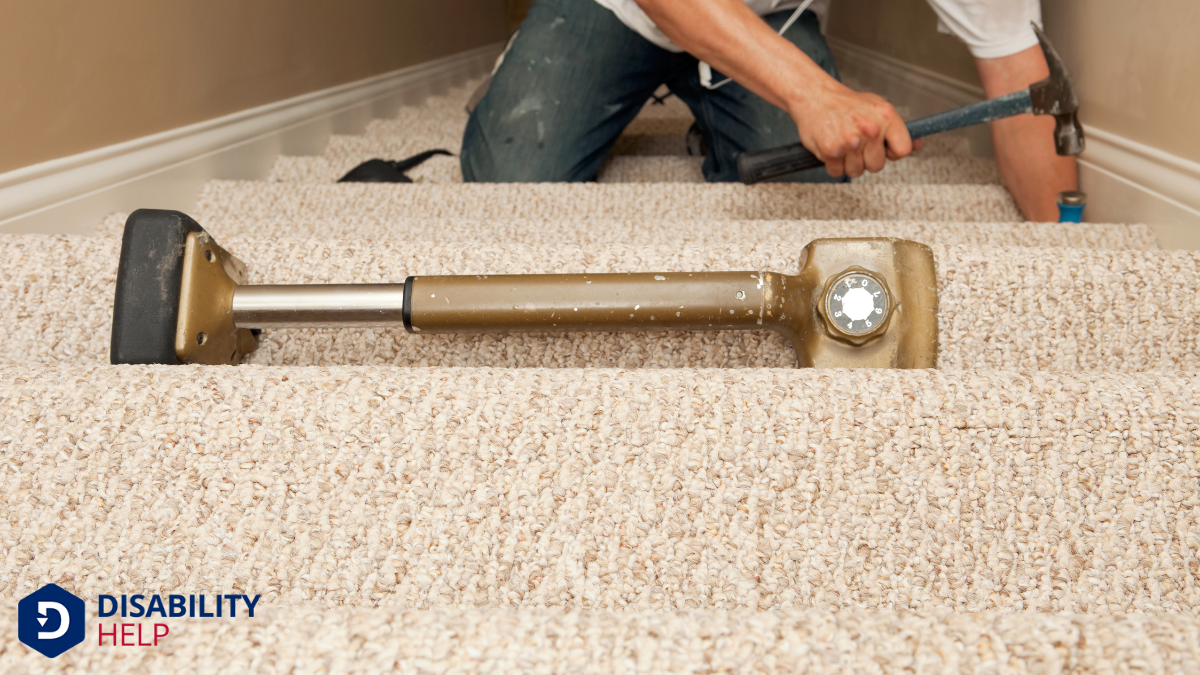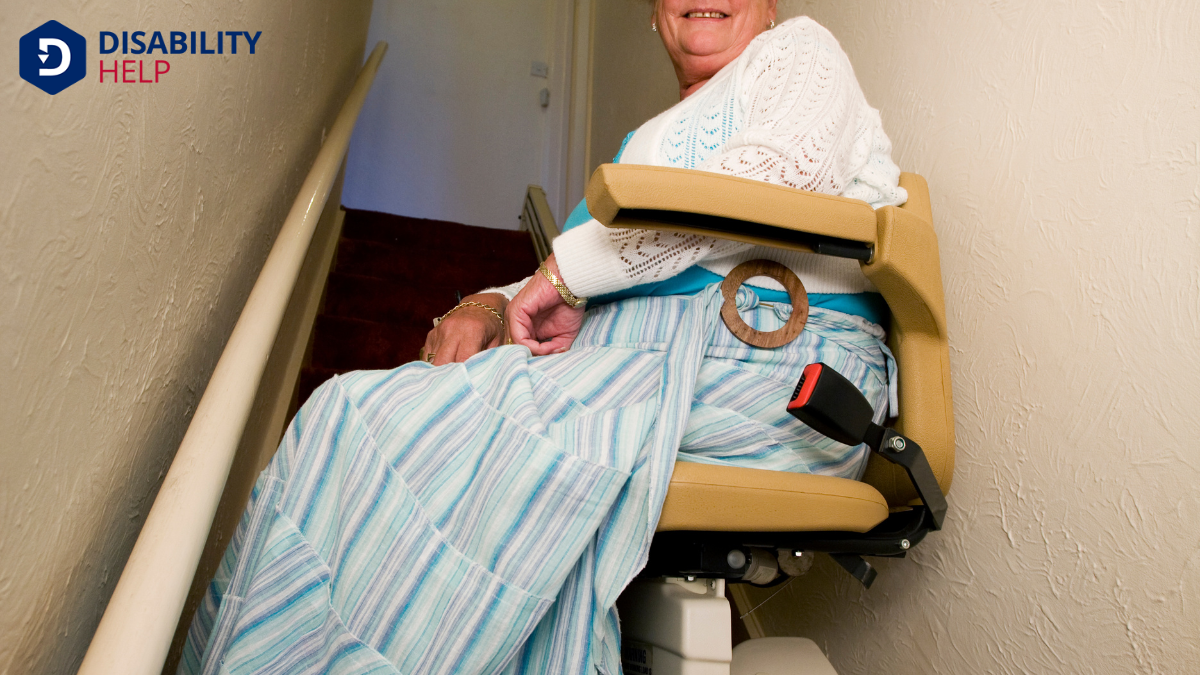When we consider whether stair lifts are worth the investment, it's essential to weigh the convenience and safety they offer against the initial cost. These devices can transform how we navigate our homes, especially for those with mobility challenges. While alternatives like ramps exist, stair lifts provide a unique blend of practicality and reliability. But what about their long-term value and the peace of mind they promise? Let's explore further.
Key Takeaways
- Stair lifts significantly enhance mobility and safety for individuals with mobility challenges, providing easy and secure stair navigation.
- Despite higher upfront costs, stair lifts offer long-term value by maintaining home accessibilityThe design of products, devices, services, or environments to be usable by people with disabilities.... and potentially increasing property value.
- Safety features like seatbelts and obstacle sensors ensure secure transit, minimizing accident risks for users.
- Professional installation is recommended, ensuring proper functionality and adherence to any local regulations or permits.
- Regular maintenance and optional extended warranties can extend the lift's lifespan and ensure reliable performance.
Understanding Stair Lift Functionality
When we explore stair lift functionality, we’re diving into how these devices can transform mobility at home. Stair lifts offer a practical solution, allowing us to navigate stairs safely and effortlessly. They’re designed to carry an individual up and down stairs, providing independence to those with mobility challenges.
With a simple joystick or button control, users can operate the lift smoothly and securely. Most stair lifts come equipped with safety features like seatbelts, swivel seats, and sensors to detect obstacles.
Installation is straightforward, often requiring minimal modifications to our existing staircase. By understanding these features, we can appreciate how stair lifts enhance accessibility and comfort in our homes. They’re more than a convenience—they’re a gateway to maintaining our independence.
Evaluating Cost Considerations
As we consider the cost of stair lifts, we need to look at more than just the initial investment.
Let's break down the installation fees, which can vary based on the complexity of your staircase.
We'll also examine the ongoing maintenance and upkeep costs to guarantee the lift remains reliable over time.
Initial Investment Overview
Investing in a stair lift can markedly impact both our finances and quality of life, so it’s vital to evaluate the initial costs carefully.
When we consider purchasing a stair lift, it’s important to look at the base price. Stair lifts can range widely in cost, typically starting from around $2,000 for straight staircases, but potentially exceeding $10,000 for more complex, curved models.
We'll need to factor in additional features such as upgraded seating, remote controls, and battery backups, which can increase the overall expense.
It’s significant to research and compare different models and manufacturers to find one that fits both our needs and budget. By doing so, we guarantee that our investment will benefit us without unnecessary financial strain.
Installation Fees Explained
While evaluating the total cost of a stair lift, we mustn't overlook the installation fees, which can greatly affect our budget.
These fees vary based on factors like the complexity of our staircase and the company we hire. Standard straight staircases usually have lower installation costs, while curved or custom designs might require more labor and expertise, increasing expenses.
We should always ask for detailed quotes before committing, ensuring we comprehend every charge. Some companies include installation in their package price, while others list it separately, so let's compare offers.
Additionally, it's wise to verify if any permits are required, as this could add to the cost. By being informed, we can make a decision that's financially sound and stress-free.
Maintenance and Upkeep Costs
Considering the ongoing expenses, it’s important to account for maintenance and upkeep costs when evaluating the value of a stair lift.
Regular servicing not only extends the lifespan of the lift but also guarantees safety.
Let's break down the typical costs:
- Annual Servicing: Most manufacturers recommend a yearly check-up, costing around $100 to $200.
- Replacement Parts: Over time, parts like batteries or seat covers may need replacing, with prices varying from $50 to $300.
- Repairs: Unexpected repairs might arise, with fees ranging from $100 to $500, depending on the issue.
- Extended Warranty: Purchasing an extended warranty can offer peace of min,d but costs an additional $200 to $600.
Installation Process and Requirements

When planning to install a stair lift, understanding the installation process and requirements is essential to guarantee that everything goes smoothly.
First, we must assess if our staircase is suitable. Most stair lifts fit straight and curved staircases, but measurements confirm a proper fit. We'll need to check the weight capacity too, making sure it suits our needs.
Next, consider the power source. Stair lifts typically require access to a standard power outlet. Some models use battery backup, so understanding these options can help us choose wisely.
Additionally, professional installation is often recommended. Experts guarantee safety and functionality, saving us potential hassle.
Finally, we should verify any permits needed in our area. Following these steps, we can enjoy a seamless installation experience.
Comparing Stair Lifts to Alternatives
Let's weigh the cost and value of stair lifts against other mobility solutions.
While stair lifts might've a higher upfront cost, their convenience and ease of use can offer significant value over time.
We'll also examine how installation and maintenance compare, helping us decide if a stair lift is the right choice.
Cost vs. Value
Choosing between stair lifts and their alternatives boils down to understanding the balance of cost versus value.
Let's consider the factors that influence this decision:
- Initial Investment: Stair lifts typically have a higher upfront cost compared to alternatives like ramps or home modifications. However, they offer immediate usability and convenience.
- Long-term Benefits: Stair lifts provide ongoing accessibility with minimal physical strain, which can enhance quality of life and independence.
- Resale Value: Homes with stair lifts might appeal more to potential buyers needing accessibility features, potentially increasing property value.
- Customization Flexibility: Unlike permanent modifications, stair lifts can be tailored to specific needs and easily removed or relocated if circumstances change.
Installation and Maintenance
While considering the installation and maintenance of stair lifts compared to alternatives, it’s clear that each option has its unique demands and benefits.
Stair lifts typically involve a straightforward installation process, often completed within a few hours. They require minimal structural changes and are less invasive to our homes. Maintenance is generally low, involving periodic checks and occasional servicing to guarantee safety and functionality.
In contrast, alternatives like elevators or home modifications can be more complex and costly. Elevators demand significant structural alterations, while ramps need ample space and can be visually intrusive.
Both options often require more extensive maintenance routines. By understanding these differences, we can make an informed decision about which solution best fits our mobility needs and home environment.
Assessing Individual Mobility Needs
How do we determine if a stair lift is the right choice for addressing mobility challenges? We begin by evaluating our specific needs and circumstances.
First, let’s consider a few key factors:
- Physical Ability: Are we or our loved ones struggling with stairs due to age, injury, or a medical condition?
- Frequency of Use: How often do we need to navigate stairs, and is there a consistent difficulty?
- Budget Constraints: Do we've a budget that accommodates purchasing and installing a stair lift?
- Home Layout: Is our staircase suitable for a stair lift installation, considering its design and available space?
Exploring Safety Features and Benefits

Having assessed our mobility needs and determined that a stair lift might be a viable solution, let's now focus on the safety features and benefits these devices offer.
Most stair lifts come equipped with seatbelts, guaranteeing we’re securely in place during transit. Safety sensors are another critical feature; they detect obstacles and stop the lift to prevent accidents.
Swivel seats make getting on and off easier and safer, reducing the risk of falls. Additionally, battery backup guarantees operation during power outages, providing peace of mind.
Beyond safety, stair lifts grant us independence and ease of movement, allowing access to all levels of our home without strain.
Long-Term Value and Maintenance
Investing in a stair lift can offer substantial long-term value, not just regarding safety and convenience, but also in maintaining our home's accessibility as we age.
Over time, stair lifts can actually save us money by reducing the need for costly home modifications or potential relocation. However, understanding maintenance is essential. Regular upkeep guarantees the lift runs smoothly, extending its lifespan and preserving its value.
Here's how we can maximize long-term value:
- Regular Maintenance: Schedule professional inspections annually to catch minor issues before they become major.
- Warranty and Service Plans: Opt for extended warranties to cover unexpected repairs.
- Proper Use: Follow the manufacturer’s guidelines to prevent unnecessary wear.
- Battery Checks: Replace batteries when needed to guarantee reliable performance.
These steps help maintain our investment effectively.
Conclusion
In evaluating whether stair lifts are worth it, we believe they offer significant benefits for those with mobility challenges. They provide enhanced safety, independence, and convenience, especially when compared to alternatives like ramps. While the initial cost might be higher, the long-term value, including potential property value increase, makes them a smart investment. With features like safety sensors and battery backups, stair lifts guarantee reliable operation, giving both users and caregivers peace of mind.






